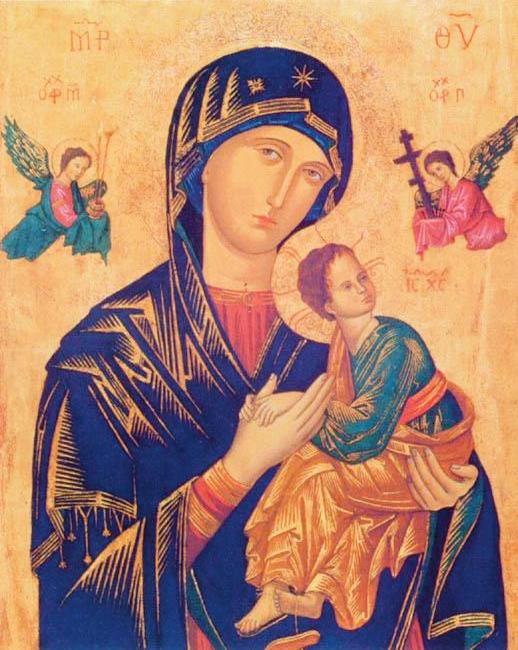
3 minute read
Icon: a Living Prayer
by SOLL21
The Icon: Living Prayer
MarieHelene Cook
Advertisement
When I was a child, I thought icons were a bit frightening, even though they gave me a feeling of awe and reverence. Only later I discovered that the reason why they did not attract me was they were not pictures speaking to one’s sensitivity or emotions. They were not to be admired by the eyes of our body but by the eyes of our soul. An icon is not only a sacred picture, a religious and liturgical image, it is also a prayer, a living prayer.
Since the artist spent a long time in prayer, silence and solitude before and during the painting, the icon is the work of the Holy Spirit. The painter, a tool in God’s Hand, must decrease to let God increase, as St Paul says. To a certain extent one may regard his work as a ‘journey of purification’. We may even consider that, so long as the artist remains humble and prayerful, his creation of the icon, from his purified heart, is the work of God; it is He who creates its dynamic quality and ensures its truth; it is He who allows the sacred and eternal image to take shape under the painter's brush. The artist does not feel any pride, on the contrary he grows in humility and awe.
The work of the Holy Spirit doesn’t stop there: God will continue to act in the heart of the viewer who takes time to contemplate the work of art. This icon will nourish the soul of the beholder in a unique and personal way. It is as if the prayer of the artist meets the prayer of the beholder in an intimate encounter.
St Basil goes to the heart of the matter: "If we are illumined by divine power, and fix our eyes on the beauty of the invisible God, and, through the image, are led up to the indescribable beauty of its source, it is because we have been inseparably joined to the Spirit of Knowledge. He gives those who love the vision of truth the power which enables them to see the image, and this power is Himself”. Then St Basil remarks: "it is impossible for you to recognize Christ, the Image of the invisible God, unless the Spirit enlightens you". “The image of Christ is engraved on the human heart. The very aim of our life is to manifest this interior icon.”
When we regard an icon, we can understand why the Church recognises icons as sacramentals. They express and communicate the eternal presence of God; at the same time they lead us to contemplate God in prayer, not only in private but also as part of the Church community of believers, through faith and under the invisible operation of divine grace.
MH Cook

The presence of icons in Churches, as the priests celebrate and the faithful pray, is the realization of that moment when the mystery of the communion of saints in adoration of the Trinitarian God will be accomplished: the communion of all who were pleasing to God and who form the praying Church of today and of centuries to come. And the veneration of icons in the worship of the Church is of even greater importance, because it draws the faithful who venerate them closer to God, to the hypostatic presence of the persons portrayed and to the sacramental gestures celebrated in the fear of the Lord. Patriarch Dimitrios I
(Encyclical, 15 September 1987, No. 30)
St Basil
Art for art’s sake, which only refers to the author, without establishing a relationship with the divine world, does not have its place in the Christian concept of the icon. No matter what style is adopted, all sacred art must express the faith and hope of the Church. The tradition of the icon shows that the artist must be conscious of fulfilling a mission of service to the Church.
Pope John Paul II (Duodecimum Saeculum, No. 11)








